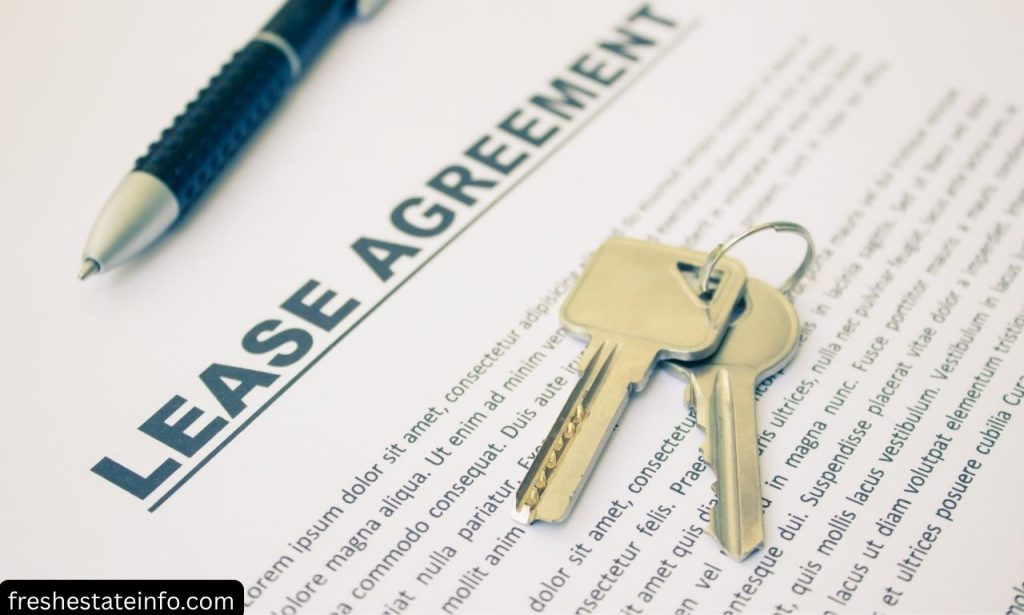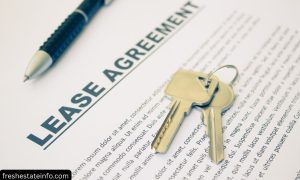Finding the right apartment can feel like solving a complex puzzle. The timing of signing a lease often confuses many renters. You might wonder if you should sign months ahead or wait until the last minute. Each rental market has its rhythms and patterns that affect availability and pricing. Understanding when to sign can save you money and secure your perfect space. This guide will help you navigate the lease signing process with confidence. You’ll learn the ideal timeframe for signing and essential factors to consider before committing. Let’s explore the ins and outs of apartment lease timing together.
How Early Can You Sign a Lease for an Apartment?

Most landlords list available units 30 to 60 days before the tenant moves out. This window gives them time to find new renters without long vacancy periods. Some property managers in high-demand areas may accept applications up to 90 days in advance. College towns often have leases available 6 to 8 months ahead for the next academic year. The best time to start looking depends on your local rental market conditions.
Summer months typically see more apartment turnover and availability in many regions. Winter months might offer better deals due to lower demand in colder locations. Large apartment complexes usually have more predictable availability than private landlords. Your ideal timing might differ based on the type of unit you’re seeking.
Don’t expect to sign a lease more than six months in advance in most markets. Most property owners prefer shorter windows to reduce the risk of cancellations. Popular apartments in competitive areas might require quicker decisions when they become available. Being prepared with application materials can give you an advantage in fast-moving situations. When applying, have your references, proof of income, and security deposit ready.
5 Things to Consider Before Signing a Lease
The lease agreement contains crucial details affecting your daily life for months. Reading the fine print before signing can prevent future headaches and unexpected costs. These five factors deserve your careful attention during the decision-making process.
Length of the Lease
The standard rental term typically ranges from six months to one year. Some landlords offer month-to-month agreements for greater flexibility but at higher rates. Shorter leases might cost more monthly but provide freedom to relocate more easily. More extended agreements usually lock in your rental rate and offer more stability.
Consider your future plans carefully before committing to a specific term length. Job uncertainty or potential relocation needs might make shorter terms more practical. Students often benefit from academic year leases that align with the school calendar. Breaking a lease early typically incurs significant penalties and possible legal consequences.
The lease should clearly state what happens when the initial term ends. Some agreements convert to month-to-month arrangements after the first year concludes. Others require signing a new lease or providing notice before the end date. Ask about renewal options and potential rent increases for subsequent terms.
Utilities: Are They Included?
Utilities can significantly impact your total monthly housing costs beyond the base rent. Some rentals include water, trash, and sewer services in the monthly payment. In most arrangements, the tenant is responsible for electricity, gas, and internet. Buildings with central heating or cooling systems might handle those costs differently.
The lease should explicitly state which utilities are included and which you must establish. Before signing, ask about average monthly costs for tenant-paid utilities. Older buildings might have higher utility costs due to less efficient systems.
Some landlords require certain utilities to remain in your name during the lease term. Water and electricity services might need documented transfers when you move in. Utility companies often check credit scores before establishing new service accounts. Budget for security deposits that utility providers might require for new service.
Amenities: What’s Offered, and at What Cost?
Apartment amenities can transform your living experience, but might affect your monthly budget. The apartment’s base rent often includes fitness centers, pools, and community spaces. Parking spaces might cost extra, especially in urban areas with limited availability. Storage units, bike racks, and pet privileges frequently carry additional monthly fees.
The lease should clearly detail all amenities and associated costs. Some buildings charge amenity fees even if you don’t use certain facilities. Ask about guest policies for community spaces before hosting gatherings.
Seasonal amenities like pools might have restricted hours or limited availability periods. Security features such as building access cards might require deposits. Confirm whether amenity access could change during your lease term. Maintenance schedules might temporarily affect your use of certain facilities.
Security Deposit Terms
The security deposit protects landlords against damage beyond normal wear and tear. Most states limit deposit amounts to one or two months’ rent. The lease should detail the exact conditions for receiving your full deposit back. Documented move-in inspections help prevent disputes about pre-existing damage.
Ask about the timeline for deposit returns after moving out. Most areas require landlords to return deposits within 14 to 30 days. Some properties require professional cleaning services before move-out to receive full refunds. Take dated photos during move-in and move-out to document the unit’s condition.
The landlord must typically hold your deposit in a separate account. Some states require interest payments on deposits held over specific periods. Pet deposits or fees might be handled differently than the main security deposit. Additional deposits for keys, remote controls, or parking passes might apply.
Interior Design Changes
Personalization makes an apartment feel like home, but leases restrict most alterations. The agreement should specify exactly what changes you can make without permission. Most leases prohibit painting, wallpaper, and hardware replacements without approval. Nail holes for hanging pictures typically fall under normal wear and tear.
Ask about the process for requesting permission for specific modifications. Some landlords allow changes if you restore the unit to its original state before leaving. Major alterations might require professional installation or specific materials.
Document any approved changes in writing before starting any work. Keep copies of all communication about modification requests and approvals. Some landlords offer pre-approved paint colors if you want to refresh walls. Consider removable options like peel-and-stick wallpaper and command strips for decorating.
The Benefits of Signing a Longer Lease for Tenants
Longer lease terms have several advantages that might outweigh the reduced flexibility. These benefits can significantly improve your rental experience over time. Consider these factors when deciding between shorter and longer agreement options.
Greater Security and Stability
A longer lease locks in your housing situation for an extended period. You won’t face the uncertainty of finding new housing every few months. Rent increases can’t occur until your lease term concludes in most situations. Your landlord cannot ask you to leave without legal cause during the lease period.
This stability helps with financial planning and budgeting for the longer term. Schools, commutes, and community connections remain consistent throughout the lease. You can invest in furniture and decor explicitly suited to your space. The psychological benefits of housing security shouldn’t be underestimated.
Less Stress Around Lease Renewal
Annual renewal negotiations create anxiety for many renters every year. Longer leases reduce how frequently you must deal with this process. You’ll spend less time reviewing new lease terms and conditions. The paperwork and administrative tasks happen less often with extended agreements.
Multi-year leases eliminate annual moving considerations and housing searches. You won’t need to research market rates and comparable units as frequently, and the time and energy saved can be directed toward other important life areas. Renewal fees and processing costs occur less often with longer terms.
Improved Relationship with Your Landlord
Committing to a longer term demonstrates reliability to your property manager. Landlords often provide better service to tenants they expect to stay. Maintenance requests might receive higher priority from appreciative property owners. You may gain more leverage for requesting reasonable accommodations or changes.
Long-term tenants typically receive more consideration during policy changes. Your consistent payment history builds trust with management over time. Landlords might be more flexible with occasional late payments from established tenants. The mutual investment in the relationship benefits both parties substantially.
Fewer Moving Costs
Moving expenses increase quickly, even for local relocations within the same city. Longer leases mean less frequent moving truck rentals and associated costs. You’ll purchase moving supplies and packaging materials less often. Time off work for moving days becomes necessary less frequently.
The hidden costs of address changes occur less often with extended stays. Utility transfer fees and service installation charges happen less frequently. You’ll avoid repeated security deposits for new apartments every year. The wear and tear on furniture from frequent moves decreases significantly.
Conclusion
Timing your lease signing requires balancing availability, market conditions, and personal needs. Most renters should start looking 30-60 days before their desired move-in date. The lease agreement deserves careful reading and consideration before signing. Pay special attention to term length, utilities, amenities, deposits, and modification policies.
Longer leases offer compelling benefits like stability, reduced stress, better landlord relations, and lower moving costs. Your circumstances should guide the lease length that works best for you. Ask questions about anything unclear before signing any rental agreement. The perfect time to sign depends on your local market and specific housing requirements.
You can secure an apartment that meets your needs with proper planning and attention to detail. The right timing can help you find better options and potentially save money. Remember that the lease protects both you and the landlord throughout your tenancy. Happy apartment hunting, and may your next lease signing lead to a wonderful new home!
Also Read: The Future of AI in Property Management
FAQs
Most renters should sign 30-60 days before their intended move-in date for optimal selection.
Yes, many landlords will negotiate aspects like lease length, rent amount, or move-in date.
Breaking a lease typically involves penalties, possibly paying remaining rent, or finding a replacement tenant.
Yes, many landlords require proof of renter’s insurance before or shortly after signing.


